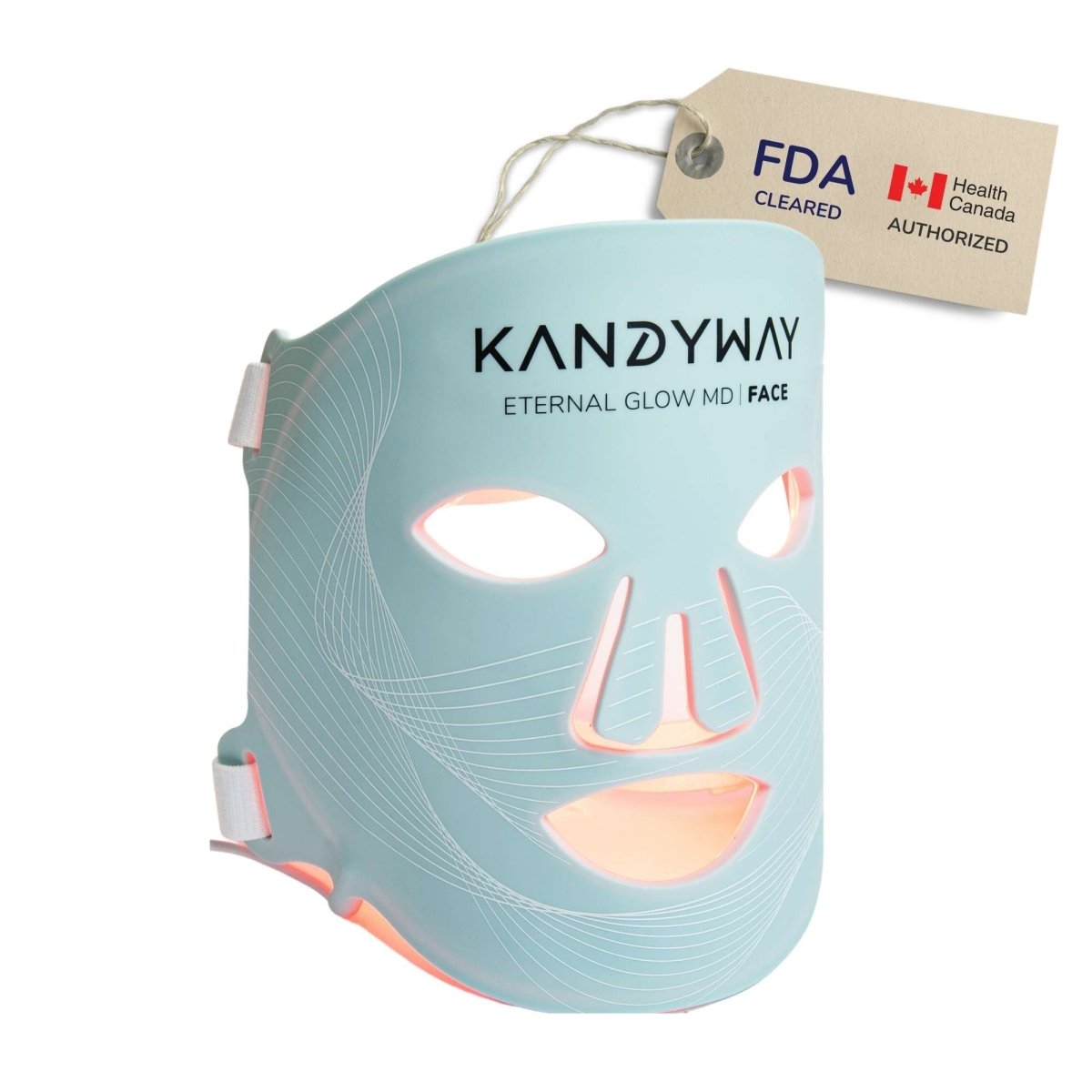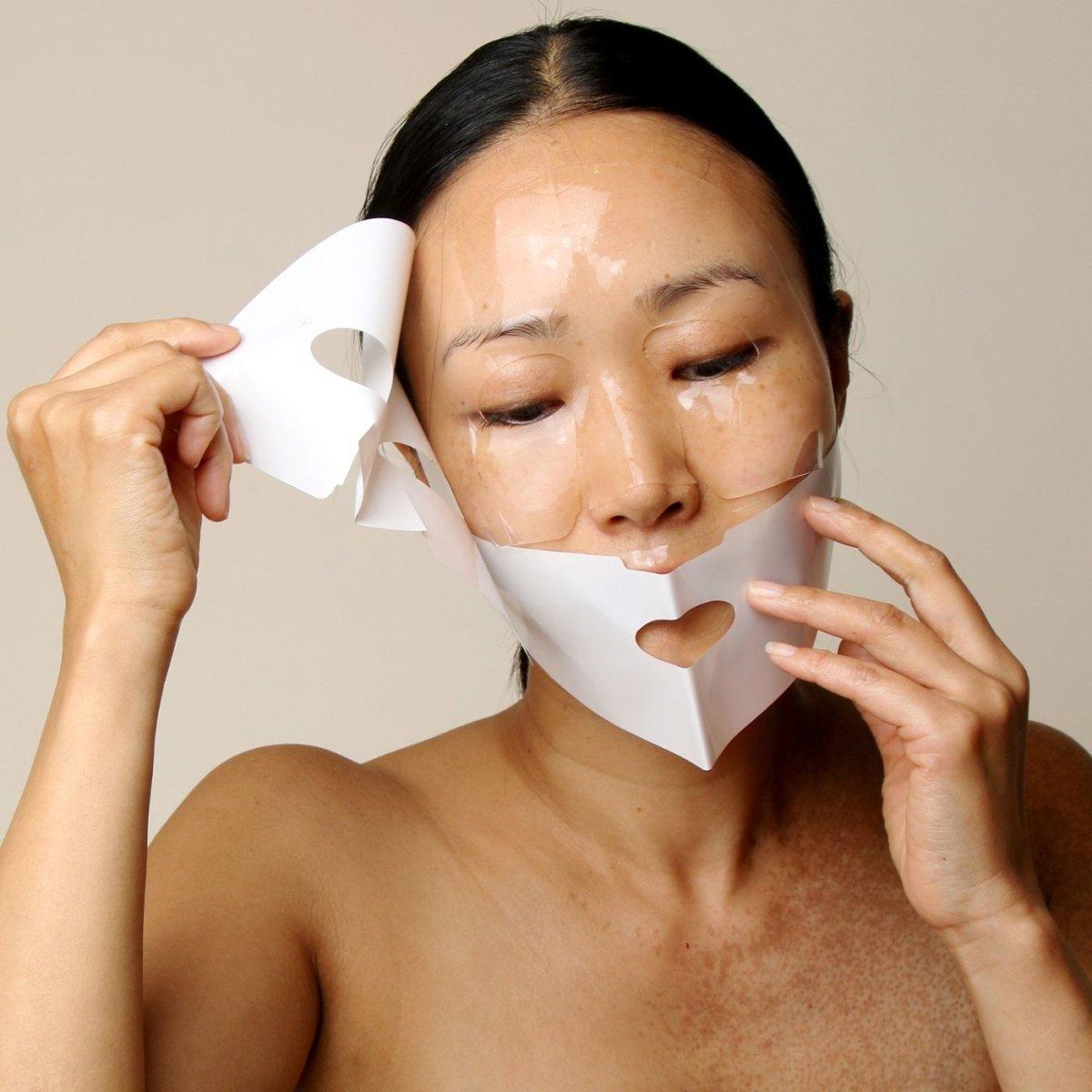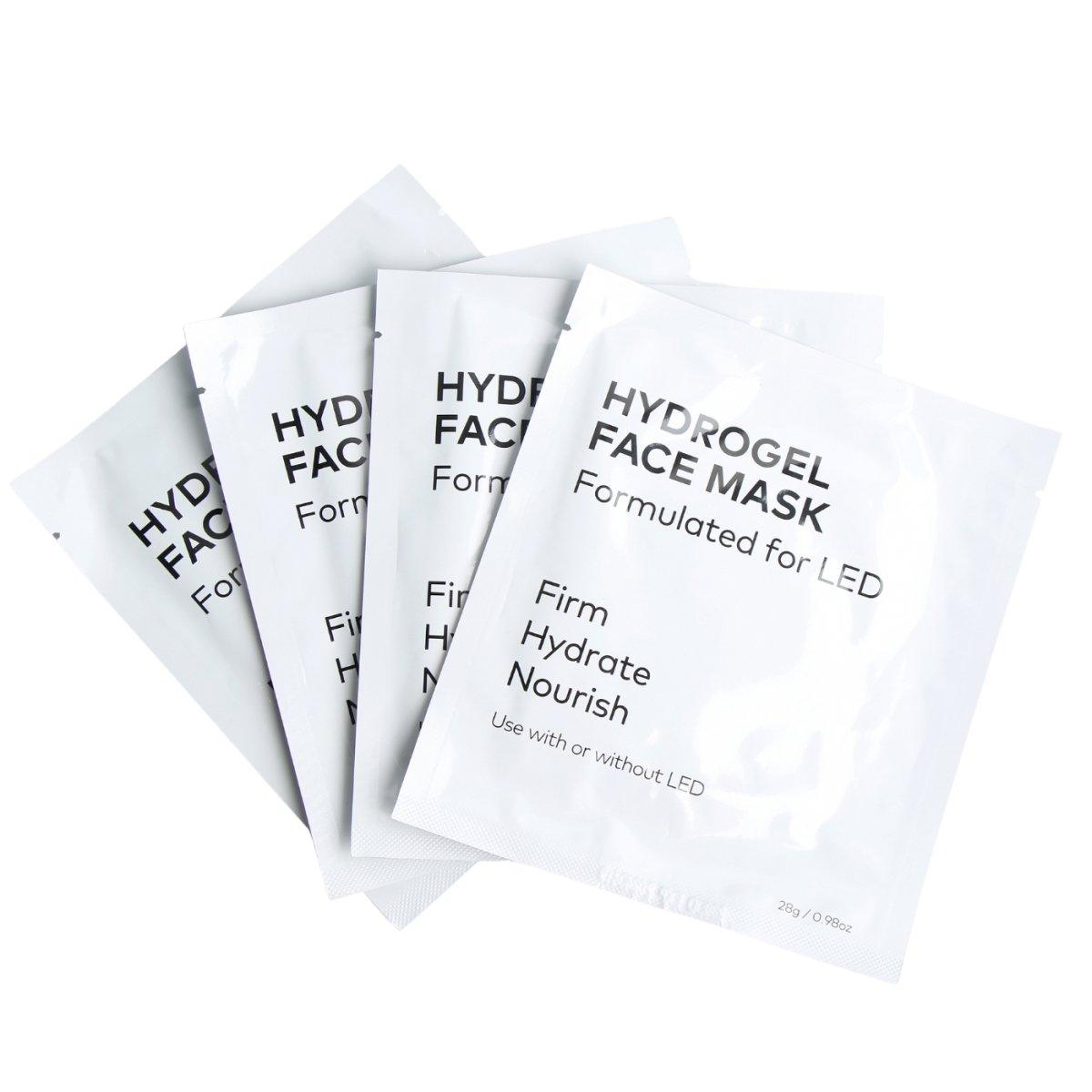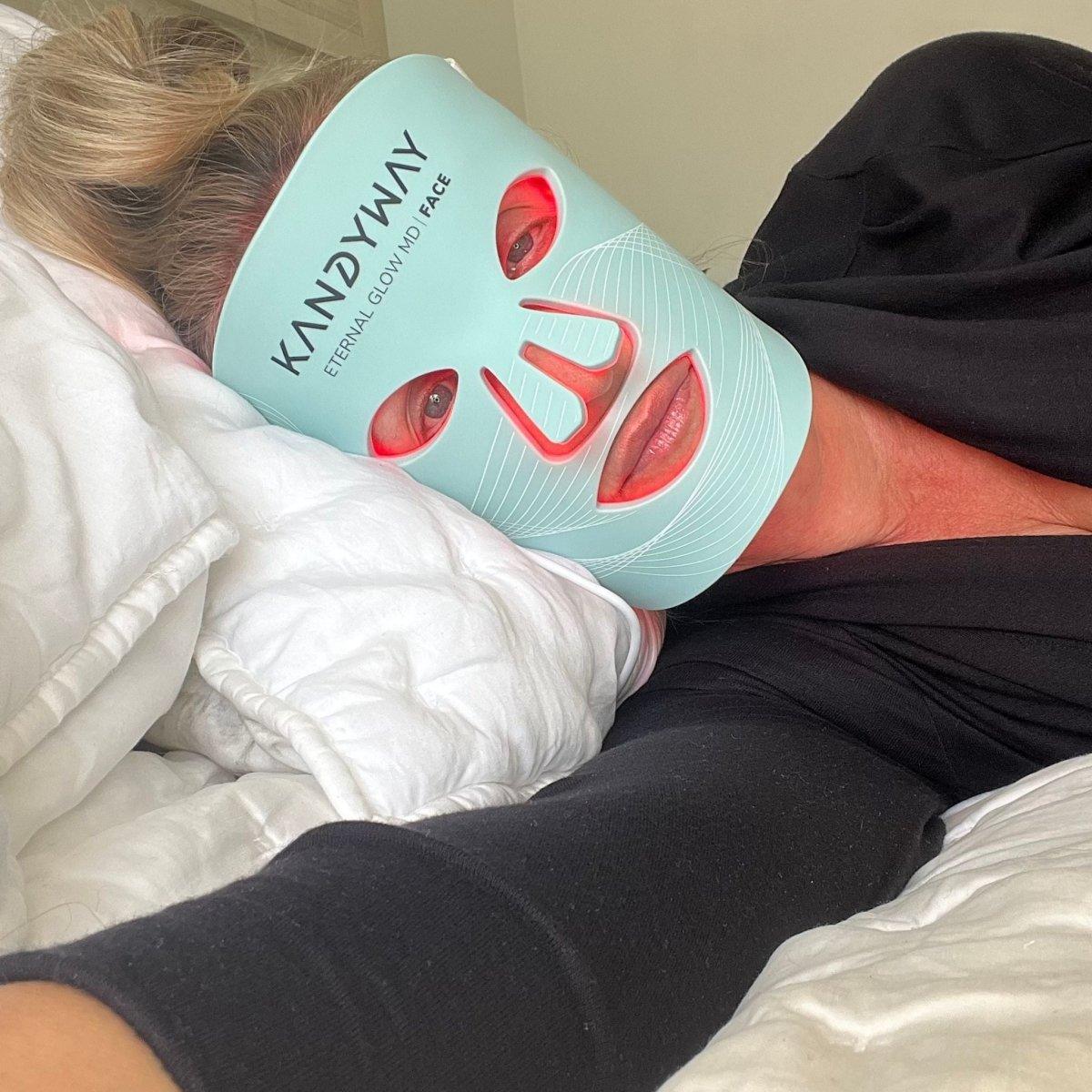When you think of light therapy, you might envision a treatment room with red and blue lights hanging from the ceiling. This is one type of light therapy, but there are more ways to treat skin problems with light. Studies have also shown that different light colors may help treat various skin problems. That's why it's essential to know about all the different types of soft therapies before starting treatment!
1. Red light

This light has a wavelength of around 620–700 nanometers (nm). It is often used to treat acne and other skin diseases, help the body make more collagen, and make scars less noticeable.
Red light phototherapy (nm) employs red light with a wavelength of approximately 620–700 nanometers. This light is thought to penetrate the skin to a depth of roughly 8-10 millimeters (mm), where chromophores absorb it.
When chromophores take in red light, it causes several physiological changes in the body, such as:
- Red light may aid in acne reduction by eliminating bacteria and reducing inflammation.
- Red light can reduce inflammation by inhibiting the production of pro-inflammatory chemicals.
- Red light can boost blood flow and circulation, which can help reduce inflammation and speed up recovery.
- Improved wound healing: Red light has been shown to encourage the formation of new blood vessels, which may aid in wound healing.
- Red light can increase the formation of collagen, a protein that helps to support the structure of the skin. This may assist in reducing the visibility of scars and fine wrinkles.
Red light phototherapy is often used to treat acne, rosacea, eczema, and dermatitis and make scars and fine lines look less noticeable. Most of the time, it is done with a particular light therapy device, like a red light therapy lamp or an LED panel.
2. Blue light

This light has a wavelength of around 400-500 nm. When chromophores take in blue light, the body goes through several changes, including:
When chromophores take in blue light, it causes several physiological changes in the body, such as:
- Acne reduction: Blue light may aid in acne reduction by destroying germs and lowering inflammation.
- Blue light is exceptionally effective in killing bacteria, particularly acne-causing microorganisms.
- Improving wound healing: Blue light has been shown to encourage the formation of new blood vessels, which may aid in wound healing.
- Blue light can reduce inflammation by inhibiting the formation of pro-inflammatory chemicals.
Phototherapy with blue light is often used to treat skin conditions like acne, rosacea, eczema, and dermatitis. It is commonly done with a blue light treatment lamp or an LED panel, which are light therapy devices.
Blue light phototherapy is not the same as the blue light emitted by computer screens and other electrical gadgets. Because of its unusual wavelength, this blue light is inefficient for curing skin disorders.
3. Green light

This light has a wavelength of around 500–550 nm. It is sometimes used to treat skin conditions such as eczema and dermatitis.
Greenlight phototherapy utilizes green light between 500 and 550 nanometers in wavelength (nm). It is thought that this light goes through the skin to a depth of 4–6 mm, where chromophores absorb it.
When chromophores absorb green light, the body undergoes several physiological changes, including:
- The green light may alleviate acne by inhibiting the formation of sebum, an oily material that can block pores and cause acne.
- Greenlight can reduce inflammation by inhibiting the formation of pro-inflammatory chemicals.
- Improving wound healing: Green light has been shown to encourage the formation of new blood vessels, which may aid in wound healing.
It is crucial to highlight that green light phototherapy has received less research attention than other types of light therapy. As a result, further research is required to comprehend its effects and possible advantages completely.
4. Yellow light

This light has a wavelength of around 575–590 nm. It is sometimes used to treat skin conditions such as acne and rosacea.
Yellow light phototherapy employs wavelengths between 575 and 585 nanometers (nm). This light is believed to penetrate the skin to a depth of around 4-6 millimeters (mm), where light-absorbing chromophores absorb it.
When chromophores absorb yellow light, the body undergoes several physiological changes, including:
- The yellow light may aid in reducing acne by inhibiting sebum formation, an oily substance that can clog pores and cause acne.
- Yellow light can reduce inflammation by inhibiting the production of pro-inflammatory molecules.
- Yellow light can encourage the formation of new blood vessels, which may aid in the improvement of wound healing.
Occasionally, yellow light phototherapy treats skin conditions such as acne and rosacea. It is frequently administered using specialist delicate therapy equipment, such as a yellow light therapy lamp or LED panel.
Yellow light phototherapy has gotten less attention than other forms of light therapy, and additional research is required to comprehend its effects and potential benefits properly.
5. Orange light

This type of light has a wavelength of around 590-620 nm. It is occasionally used to treat skin conditions such as acne and rosacea.
Orange light with a wavelength of 590 to 620 nanometers is used in orange light phototherapy (nm). This type of light is thought to enter the skin to a depth of 4 to 6 millimeters (mm) and be absorbed by chromophores.
The orange light is absorbed by chromophores, resulting in several physiological effects in the body, including:
- Acne reduction: Orange light may aid in acne reduction by decreasing the production of sebum, an oily substance that can clog pores and cause acne.
- Orange light can reduce inflammation by inhibiting the formation of pro-inflammatory chemicals.
- Improving wound healing: Orange light has been shown to encourage the formation of new blood vessels, which may aid in wound healing.
Phototherapy using orange light is sometimes used to treat skin diseases such as acne and rosacea. It is often delivered through specialized light treatment equipment, such as an orange light therapy lamp or LED panel.
It is crucial to highlight that orange light phototherapy has yet to be examined as thoroughly as other types of light therapy. Therefore, more research is required to comprehend its effects and possible advantages properly.
6. Violet light

This type of light has a wavelength of around 400-450 nm. It is occasionally used to treat skin diseases like eczema and dermatitis.
Violet light phototherapy entails using violet light with a wavelength of 400-450 nanometers (nm). This sort of light is believed to penetrate the skin to a depth of 4-6 millimeters (mm), where it is absorbed by cells known as chromophores.
Violet light absorption by chromophores causes a variety of physiological effects in the body, including:
- Killing bacteria: Violet light is especially good at killing bacteria, including acne-causing bacteria.
- Reducing inflammation: Violet light can reduce inflammation by decreasing the production of pro-inflammatory molecules.
- Violet light can reduce inflammation by inhibiting the formation of pro-inflammatory chemicals.
Violet light phototherapy is occasionally used to treat skin disorders such as eczema, dermatitis, and acne. It is often delivered through the use of a specialized light treatment device, such as a violet light therapy lamp or LED panel.
It is crucial to highlight that violet light phototherapy has not been examined as thoroughly as other types of light therapy, and more research is required to comprehend its effects and possible advantages properly.
7. White light 
This type of light has a broad spectrum of wavelengths. It is frequently used to treat seasonal affective disorder (SAD) as well as other types of sadness.
White light phototherapy is the use of white light with a wide range of wavelengths. This light is frequently used to treat the seasonal affective disorder (SAD) and other forms of depression.
The presence of blue light in the spectrum is assumed to be responsible for the physiological effects of white light phototherapy. Blue light is thought to affect the generation of melatonin, a hormone that aids in regulating sleep. Blue light exposure during the day can assist in the age of melatonin, which can improve mood and energy levels.
White light phototherapy is often delivered via lightweight therapy equipment such as a lightbox or LED panel. The light box or board is utilized for a specific time each day, usually first thing in the morning. To enhance the efficiency of the light treatment device, it must be used at the prescribed distance and for the recommended time.
It is important to note that white light phototherapy is not the same as natural sunlight, which also contains a broad spectrum of wavelengths. Natural sunlight is generally considered more effective for treating SAD and other types of depression than white light phototherapy.
8. Narrow-band ultraviolet B (UVB) light

This sort of light uses a specific wavelength of UVB light to treat illnesses including psoriasis and vitiligo. It is frequently used in conjunction with other types of lighting.
Phototherapy using narrow-band ultraviolet B (UVB) light involves the use of UVB light with a specific wavelength of roughly 311-313 nanometers (nm). This sort of light is thought to penetrate the skin to a depth of roughly 2-3 millimeters (mm), where it is absorbed by chromophores, which are cells that absorb light.
UVB radiation absorption by chromophores induces a variety of physiological effects in the body, including:
- UVB light can limit the creation of aberrant skin cells, which may improve the appearance of some skin disorders such as psoriasis.
- UVB light can reduce inflammation by lowering the generation of pro-inflammatory molecules.
- UVB light can boost the immune system, which may assist in alleviating the severity of certain skin disorders such as psoriasis.
- Killing germs: UVB light is especially good at killing bacteria, including those that cause acne.
UVB light phototherapy is often used to treat various skin conditions, including psoriasis, vitiligo, and eczema. It is usually administered using a specialized lightweight therapy device, such as a UVB light therapy lamp or LED panel.
It is important to note that UVB light can harm the skin if misused, as it can increase the risk of skin cancer. Therefore, it is essential to use UVB light phototherapy under a healthcare professional's supervision and follow all recommended precautions to minimize the risk of adverse effects.
Conclusion
The best way to figure out which color will work best for you is to try it out. You can also consult with a professional and ask them which color would be most beneficial for your specific needs. Remember that there are many different types of light therapy and each one targets different parts of the body and mind. So make sure you do your research before making any decisions!










